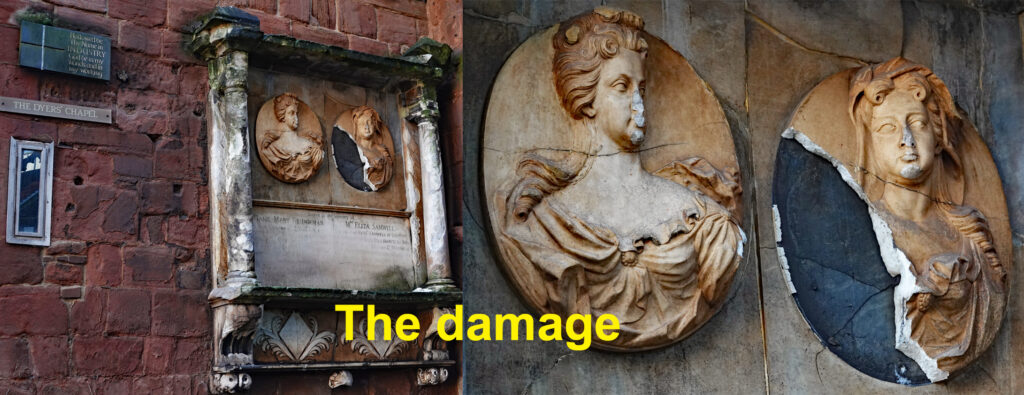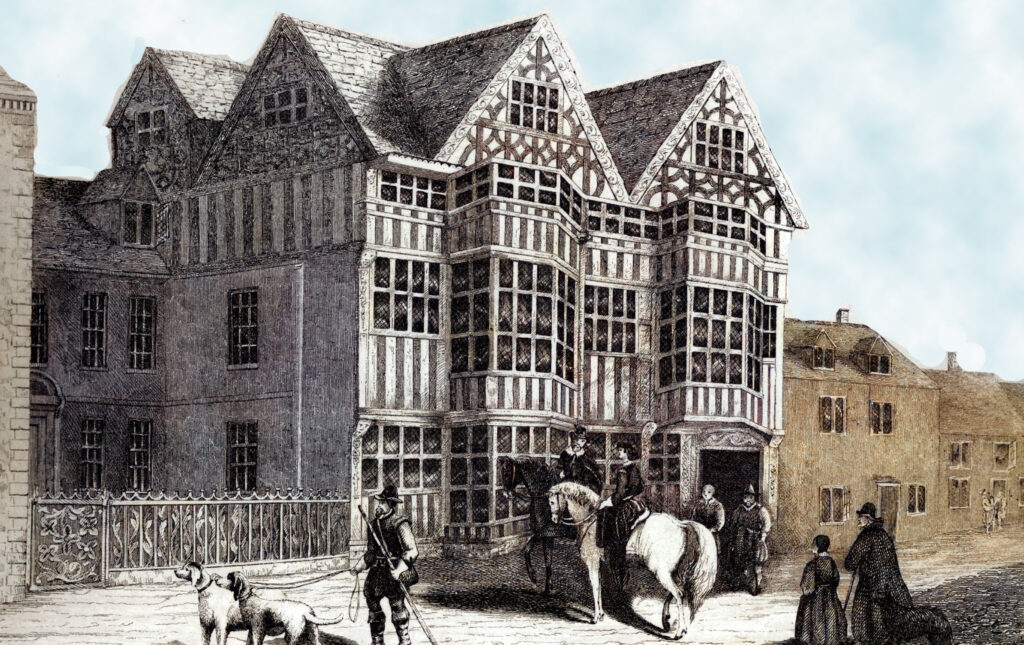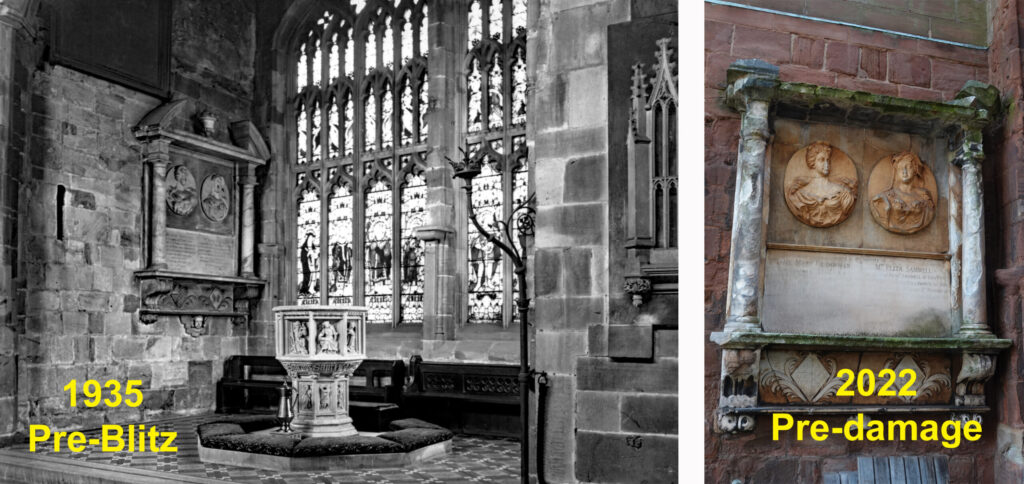
CovSoc member and Chair of the Friends of Coventry Cathedral, Martin Williams writes …
The Bridgeman Memorial on the walls of the Cathedral Ruins collapsed in October. This was quite a shock as it was only in 2019 that the memorial was the subject of grant-aided conservation works.
The Cathedral Chapter now awaits the report on the cause of the collapse from Skillington Workshop, the firm that undertook the conservation.
The history behind the Bridgeman memorial is fascinating as it commemorates Mary Bridgeman, whose family for several generations played an important part in the civic life of Coventry. The memorial was erected in accordance with the wishes of Mrs Eliza Samwell who died on 5th June 1724, and who (in the words on the monument) wished to honour the life of Dame Mary Bridgeman and “Ordered this Monument to be Erected as a Remembrance of their Great and Long Friendship.” Eliza was related to Mary by marriage and she died unmarried herself. I can discover little more about Eliza, save that Sir Thomas Samwell, her brother, served as MP for Coventry in 1715.
Mary Bridgeman, who died on the 8th June 1701, had an aristocratic background and the Bridgeman family were prominent in Coventry. Her son was later embroiled in a major public scandal.
Mary was the only daughter of Sir Thomas Cave, a Baron. She married Sir Orlando Bridgeman, whose father was also a Baron. Her husband was a 2nd son and did not inherit his father’s title, but in 1673 Charles II appointed him Baron of Ridley in his own right. He served as MP for Horsham and as a Parliamentary Commissioner for Assessment in Warwickshire and in Coventry. He died on 20th April 1701, and both he and Mary were buried in the Bridgeman family vault that lay beneath St Michael’s Church (on the north side near the Wyley Chapel).
Old records show that for the use of the Bridgeman vault a 10 guinea fine was paid and an annual rent of 5s. was paid to the church until 1718 when the rent was discontinued. Lady Bridgeman’s generosity towards St Michael’s Church is on record with her gift in 1678 of a carpet of red silk damask, with a silk and silver fringe for the pulpit and a damask table cloth and napkin.
Lady Bridgeman gave birth to two daughters and a son. Her son inherited the baronetcy upon the death of his father, whose name he shared. Orlando Bridgeman lived in a large house in Little Park Street. In 1707 he stood as a Whig at the English general election and was elected to represent Coventry. He was defeated in Coventry at the 1710 election but went on to represent Calne, Lostwithiel, Bletchingley and Dunwich.

Sadly, his career ended in public scandal. (Echoes of John Stonehouse?)
In order to finance the building of a new house, Bridgeman took on massive loans that became massive debts that were pursued against him through the courts. In 1737, after a great deal of petitioning he was appointed Governor of Barbados, a lucrative position that should have rescued his situation. Unfortunately, he never arrived in Barbados but disappeared before sailing.
Bridgeman left farewell letters to his family and to the King and his clothes were found on the banks of the River Thames. On 10th June 1738, a body was found drowned in the Thames near Limehouse and because it had been disfigured by the water, the body was wrongly identified as Bridgeman’s.
Bridgeman’s creditors had advertised a reward for any information about the circumstances of the death. The reward produced evidence that in October 1738 led to the discovery that Bridgeman was living secretly in an inn at Slough. He had falsified his death in an attempt to avoid his creditors.
In 1739 Bridgeman’s principal creditor, Richard Long, acquired Bridgeman’s estate by a Chancery Decree, so he was penniless. In 1746 Bridgeman died in Gloucester gaol. His only son had pre-deceased him, so the baronetcy failed.
The Bridgeman Memorial is not only part of the Cathedral Ruins but it is a reminder of a family that played a significant part in the civic life of Coventry, so I hope that it can be saved.


This article first appeared in the newsletter of the Friends of Coventry Cathedral and is re-published with their kind permission.
